Imagine stepping into your backyard and finding a space that not only looks stunning but also serves multiple purposes, seamlessly blending relaxation, entertainment, and functionality. Whether you’re just starting your outdoor living journey or are a seasoned pro, “11 Multi-Purpose Outdoor Area Ideas for Your Next Project” is your treasure map to unlocking the full potential of your outdoor haven.
This guide is packed with ideas that promise to enhance your lifestyle, offering practical benefits like increased home value, versatile usage, and enhanced aesthetic appeal. With each idea, you’ll find the inspiration and confidence needed to transform your outdoor space into a personal paradise that caters to your every need, making every moment spent outside a joyful, fulfilling experience.
Design Versatile Modular Seating Areas
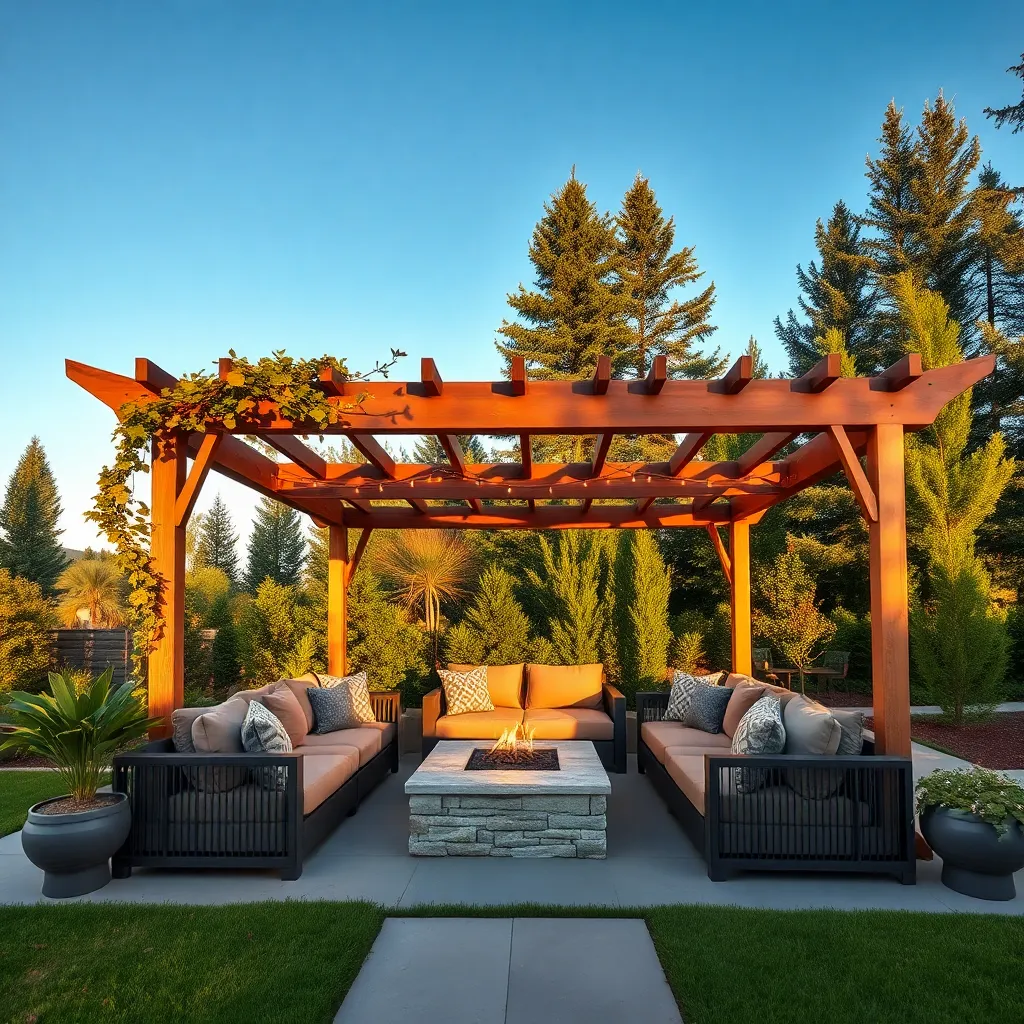
Consider using modular seating for your outdoor shelter to maximize versatility and functionality. Opt for materials such as weather-resistant wicker, treated wood, or powder-coated metal to ensure durability in various climates. Arrange your seating in a way that encourages both relaxation and conversation; for example, try a U-shape or L-shape configuration to foster intimacy and comfort. For beginners, start with a simple setup using stackable chairs or benches that can be easily rearranged or stored as needed.
For those looking to add a personalized touch, incorporate cushions and throw pillows in weatherproof fabrics to provide both style and comfort. Advanced gardeners might consider integrating built-in planters or storage compartments within the seating structures for added functionality and a seamless look. Use modular seating units that can be easily rearranged to adapt to different occasions, whether it’s a cozy family gathering or a larger social event. Aim for a balance between aesthetics and utility to create an inviting outdoor space that suits all your needs.
Incorporate Multi-Use Fire Pits
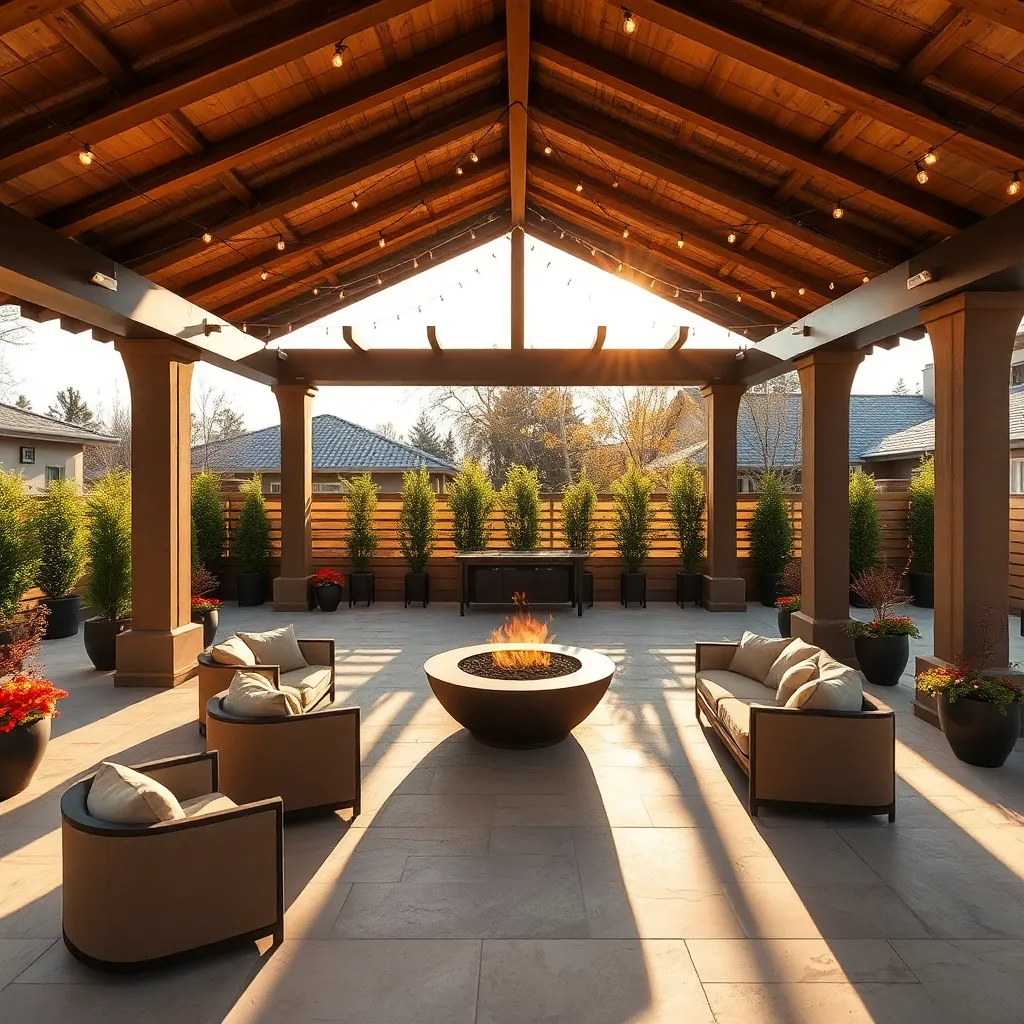
Transform your outdoor space by incorporating a multi-use fire pit that serves both as a source of warmth and a focal point for gatherings. Opt for a fire pit with a removable grill top to allow for cooking, providing a dual-purpose feature that’s perfect for both cozy evenings and impromptu barbecues. For materials, consider using durable options like stone or stainless steel, which handle heat and weather effectively. Beginners can start with a simple, prefabricated model, while more advanced DIY enthusiasts might explore custom-built designs to suit specific aesthetic and functional needs.
When planning your multi-use fire pit, think about the surrounding seating to enhance comfort and usability. Arrange seating in a circular pattern to promote conversation and ensure everyone enjoys the warmth. Use weatherproof materials, such as treated wood or metal, for longevity and ease of maintenance. Advanced gardeners might integrate natural elements like strategic plantings or stone pathways to blend the fire pit seamlessly into the landscape. Remember to keep safety in mind by maintaining a safe distance from flammable structures and using a spark guard when necessary.
Add Retractable Shade Structures
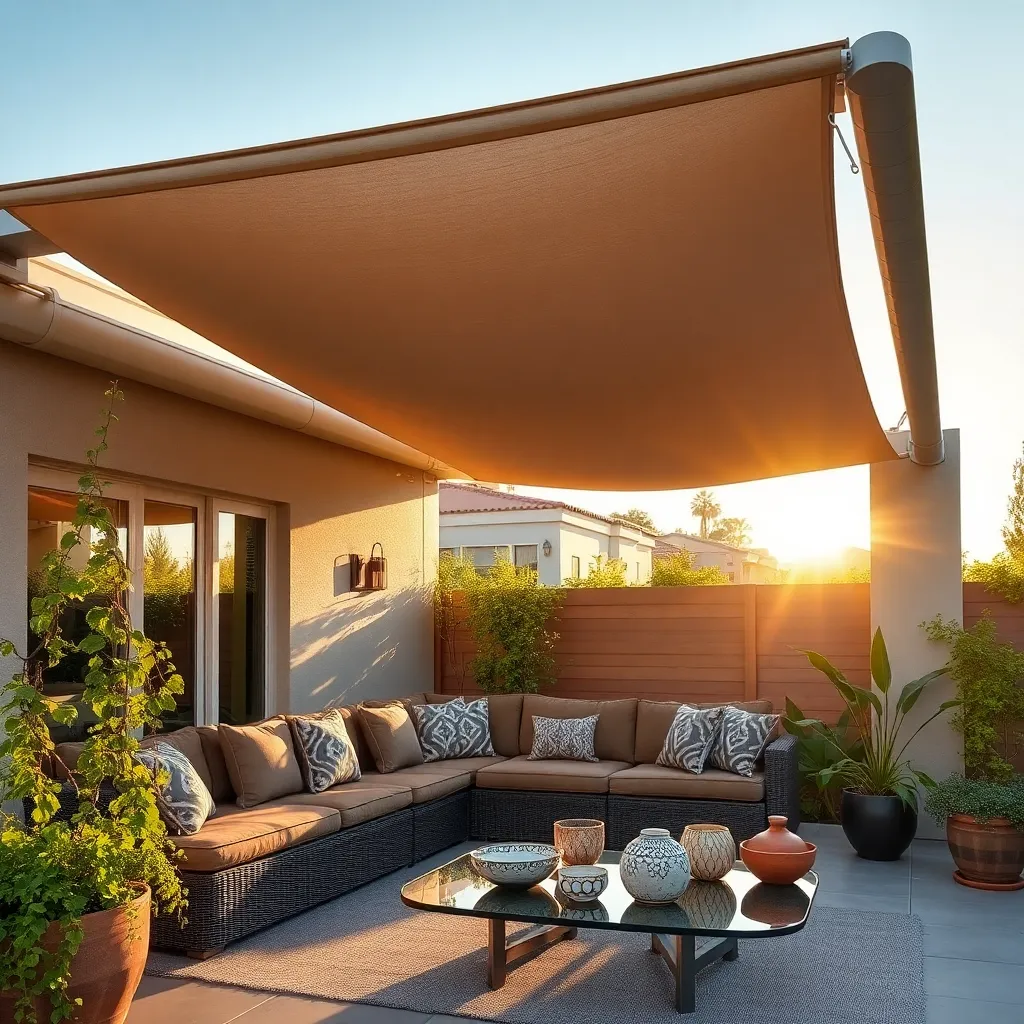
Elevate your outdoor experience by adding retractable shade structures, which offer versatility and control over your space’s exposure to the elements. Consider installing a motorized retractable awning for ease of use, allowing you to extend or retract the canopy with the push of a button. For a more budget-friendly option, manual retractable shades with a simple pulley system can also be effective. Choose durable, weather-resistant materials like acrylic or polyester fabric, which provide UV protection and are designed to withstand various climates.
For those looking to add a touch of sophistication, consider integrating a pergola with retractable canopies. These can be customized with fabric panels that slide along tracks, allowing you to adjust the shade as needed. Opt for aluminum or treated wood frames for a sturdy and long-lasting structure. To enhance the aesthetic, incorporate outdoor string lights or climbing plants like wisteria or jasmine, which can grow along the pergola’s beams and create a cozy, inviting atmosphere. Whether you’re hosting a summer barbecue or enjoying a quiet afternoon, these flexible shade solutions offer comfort and style to any outdoor area.
Create Flexible Dining Spaces
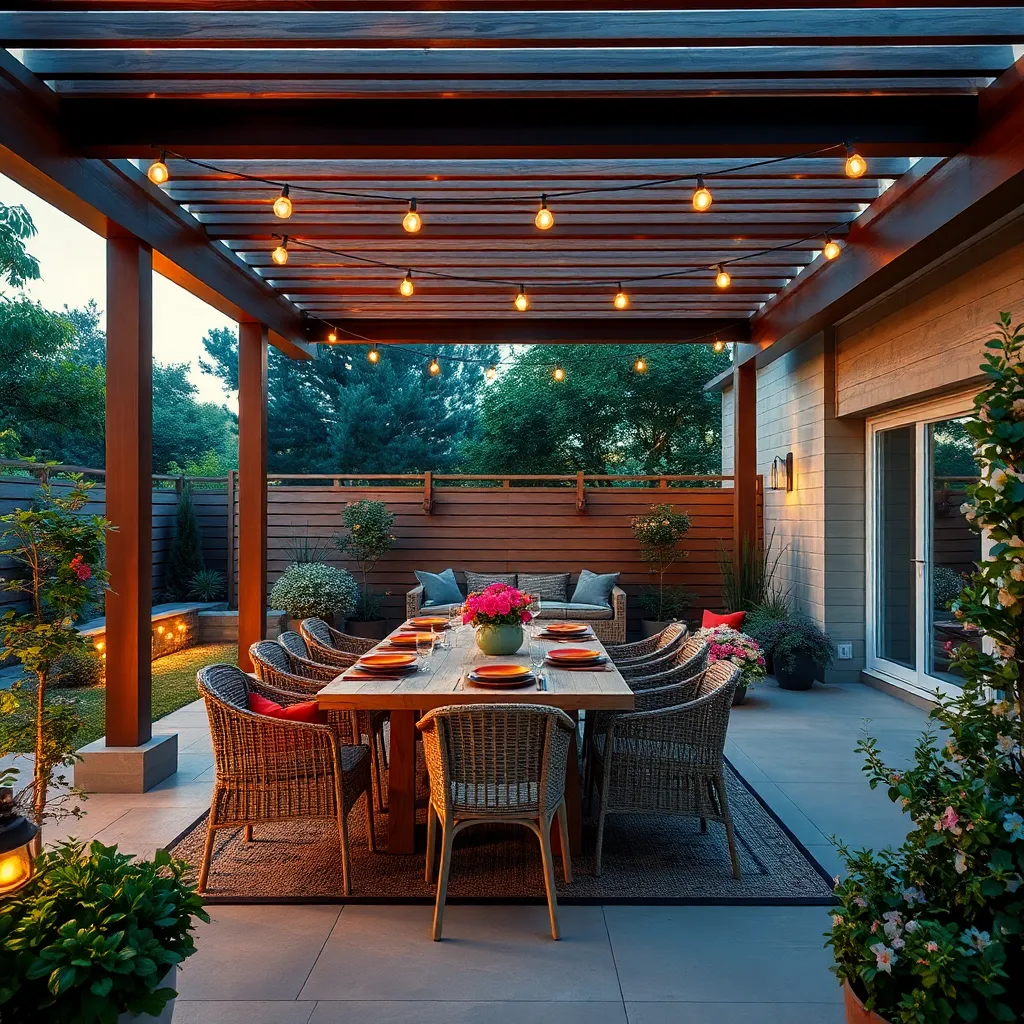
Transform your outdoor area into a flexible dining space by using adaptable furniture and versatile layout options. Opt for lightweight, weather-resistant tables and chairs that can be easily rearranged to accommodate both intimate dinners and larger gatherings. Consider using foldable or stackable furniture, which allows you to quickly create more space or store items away when not in use. For a more permanent setup, a sturdy wooden or metal pergola can provide a solid framework to support lighting and hanging decorations, enhancing the dining ambiance.
Incorporate multi-functional design elements to maximize the usability of your dining area. Built-in benches with storage capabilities can serve as seating and a place to stow cushions, tableware, or outdoor games. To keep the area lively and comfortable, install adjustable lighting such as string lights or solar-powered lamps, which can be dimmed or brightened depending on the occasion. For those looking to add a touch of sophistication, consider outdoor rugs made from durable materials like polypropylene to define the dining space while adding texture and color.
Integrate Built-In Storage Benches
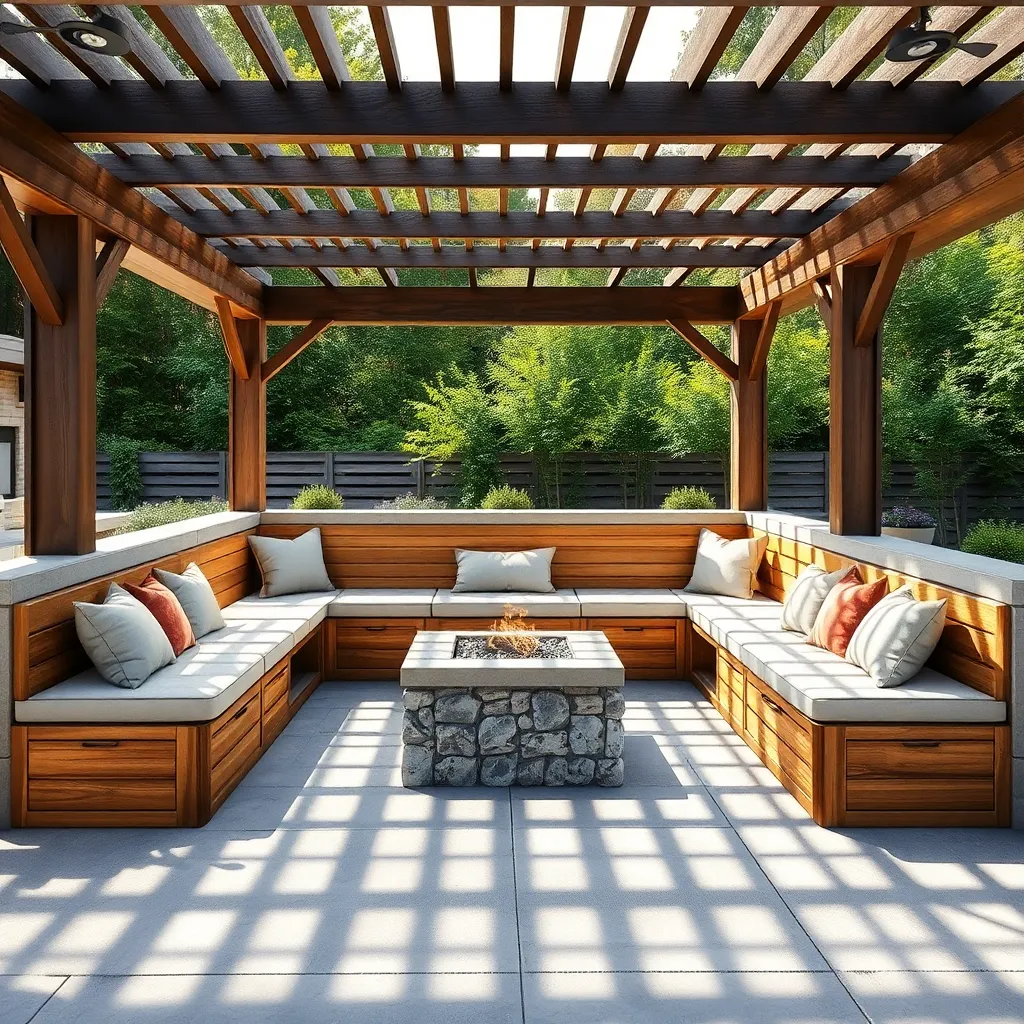
Integrating built-in storage benches into your outdoor shelter is a smart way to maximize space and functionality. These benches not only provide comfortable seating but also offer hidden storage for garden tools, cushions, or seasonal décor. For a durable and weather-resistant option, consider using materials like teak or cedar, which naturally withstand the elements. Measure the available space carefully to ensure the benches fit seamlessly, and think about adding cushions made from outdoor fabrics for extra comfort.
For those looking to elevate their design, incorporating a bench with a hinged top can offer easy access to storage while maintaining a clean look. Advanced builders might explore integrating LED lighting beneath the bench for evening ambiance. Ensure proper ventilation within the storage area to prevent mildew, especially if storing fabric items. Whether you’re a beginner or a seasoned DIY enthusiast, these built-in storage benches can transform your outdoor area into a more organized and inviting space.
Use Weatherproof Multi-Function Furniture
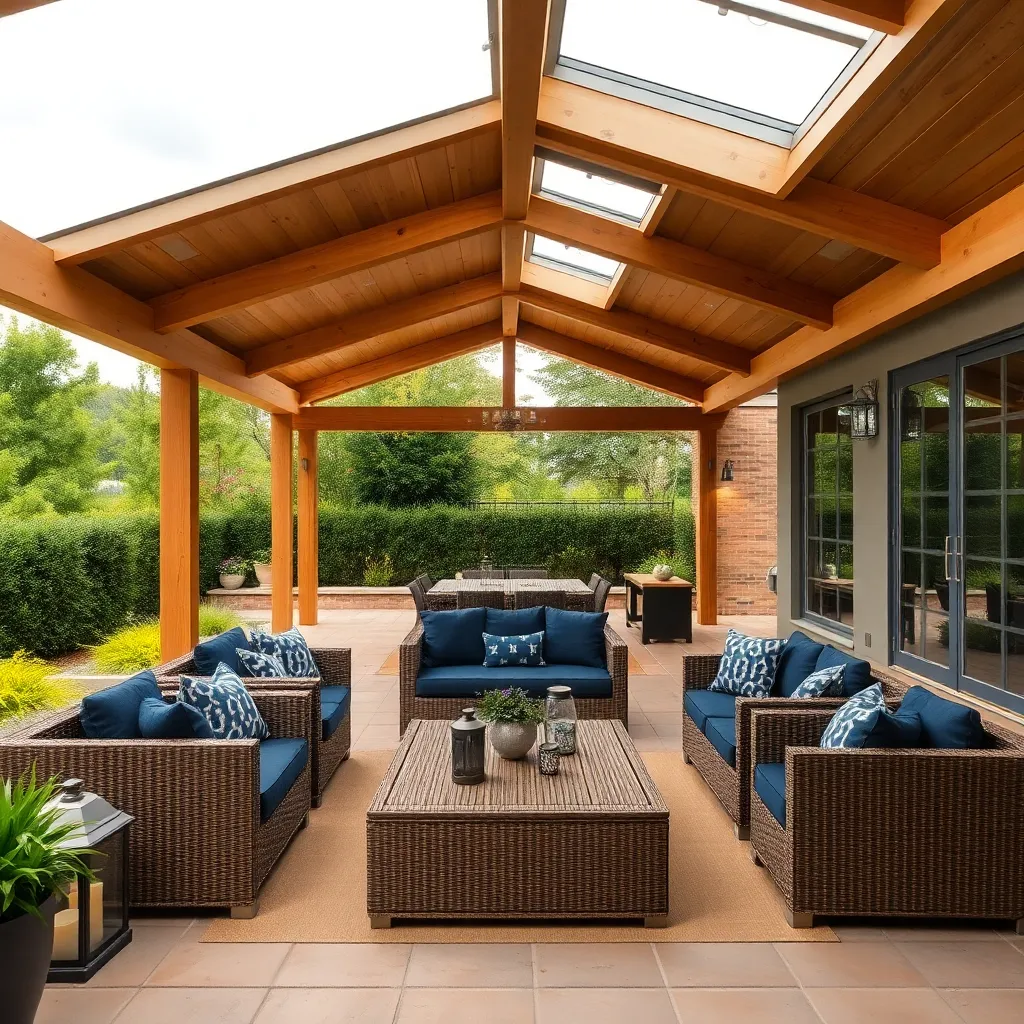
Incorporating weatherproof multi-function furniture into your outdoor area is a savvy way to maximize space and functionality. Opt for furniture made from materials like teak, powder-coated aluminum, or all-weather wicker, which are designed to withstand the elements while maintaining their aesthetic appeal. Consider pieces that offer dual functionality, such as a bench that doubles as a storage chest or a coffee table with a built-in cooler. This not only saves space but also enhances the versatility of your outdoor area, making it ready for any occasion.
For a more advanced touch, explore modular furniture systems that allow for easy reconfiguration based on your needs. These versatile pieces let you adapt your seating arrangements for larger gatherings or more intimate settings with ease. Aim for furniture with UV-resistant fabrics and cushions that can be easily removed and stored during inclement weather. This ensures your outdoor setup remains appealing and durable throughout the seasons, empowering you to enjoy your outdoor space to the fullest year-round.
Install Convertible Privacy Screens
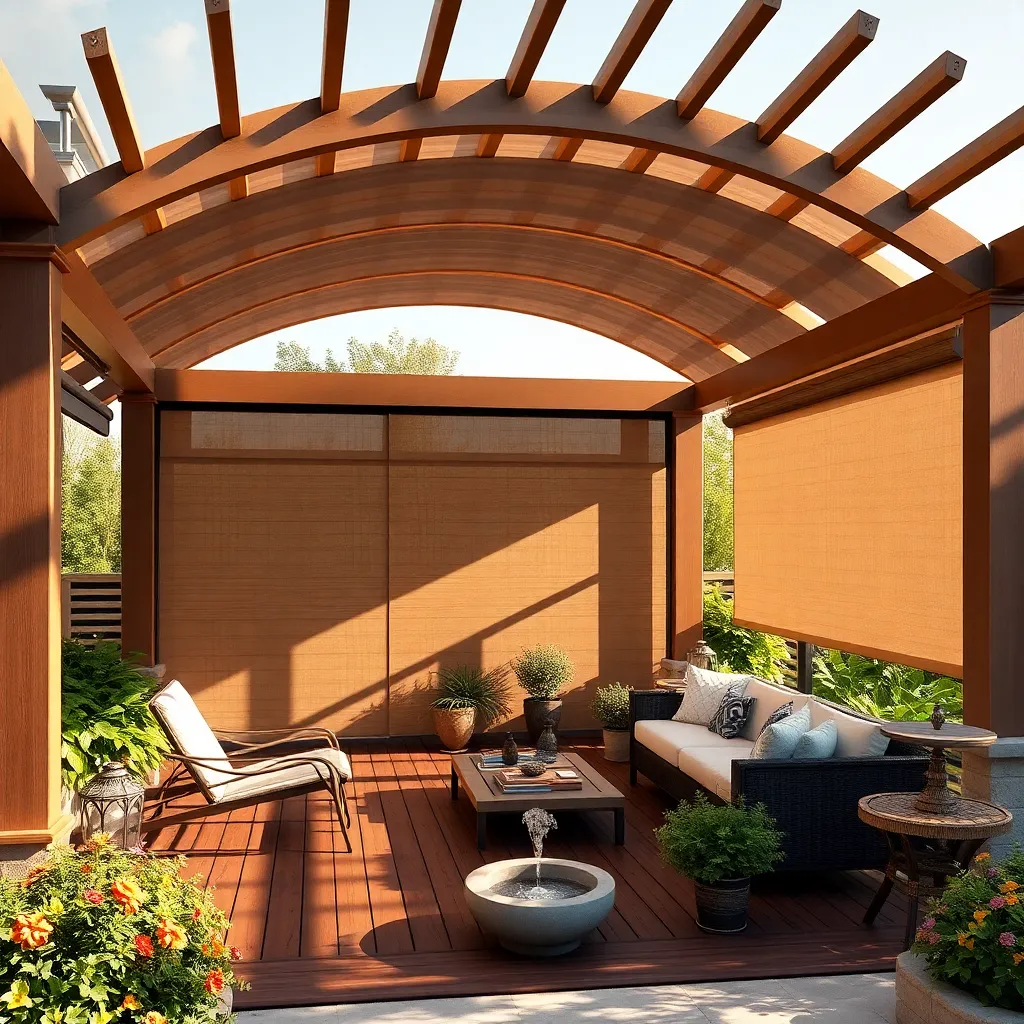
Consider installing convertible privacy screens to create a flexible outdoor space that’s both private and open when desired. These screens can be crafted from durable materials like treated wood, metal, or weather-resistant fabric, ensuring longevity and ease of maintenance. For a beginner-friendly approach, opt for ready-made screens with adjustable panels that can be easily secured to your patio or deck. Look for screens that are at least 6 feet tall to ensure effective privacy while maintaining a stylish appearance.
Advanced DIY enthusiasts might enjoy customizing their screens with unique patterns or integrating planters to add a touch of greenery. Sliding or folding mechanisms are a great choice for those who want the flexibility to open up their space or close it off depending on the occasion. To enhance stability and aesthetics, use galvanized steel hinges and brackets, which resist rust and add a polished finish. By incorporating convertible privacy screens, you can enjoy a versatile outdoor area that adapts to your needs, whether you’re hosting a gathering or seeking a serene retreat.
Design Adaptive Play and Relax Zones
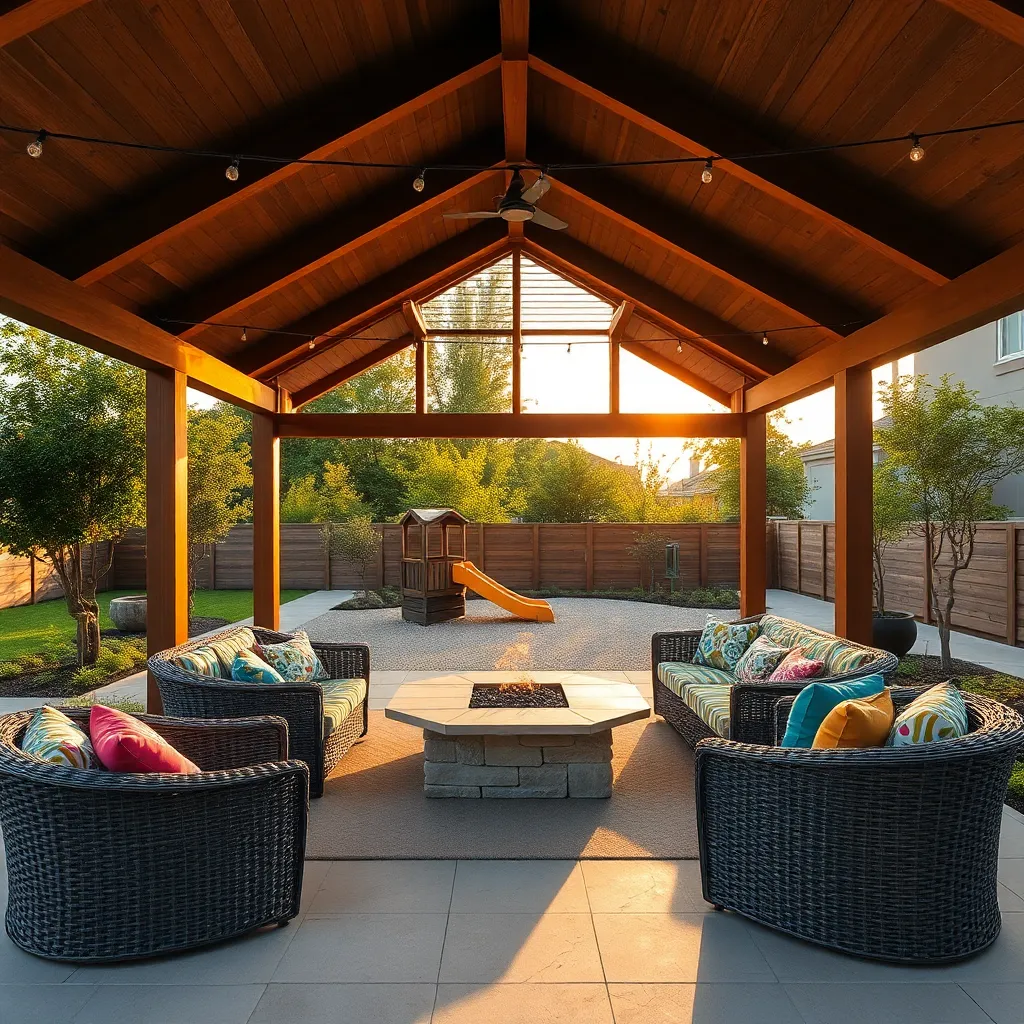
Creating adaptive play and relax zones in your outdoor area can transform your garden into a dynamic, multi-purpose space. Start by selecting durable materials like treated wood or weather-resistant composites for the flooring, which provide a safe and stable surface. Incorporate modular furniture that can easily be rearranged or stored, such as folding benches or stackable chairs, to accommodate both active play and serene relaxation. For a personalized touch, consider adding a custom-built sandbox with a removable cover or using colorful outdoor rugs to delineate play areas from relaxation zones.
To enhance functionality, integrate multi-tiered structures like pergolas or gazebos that offer both shade and an element of fun. Installing a retractable canopy or shade sail can help control the sunlight exposure, making the area comfortable during different times of the day. Advanced gardeners might also explore building a green wall or vertical garden that not only adds beauty but also serves as a natural privacy screen or noise buffer.
- For beginners, sticking with simple, portable elements like large umbrellas or lightweight, movable planters can make the space versatile with minimal effort.
- Remember to keep pathways clear and unobstructed to ensure safety, especially in areas designated for children’s play.
Plan for Seasonal Plant Integration
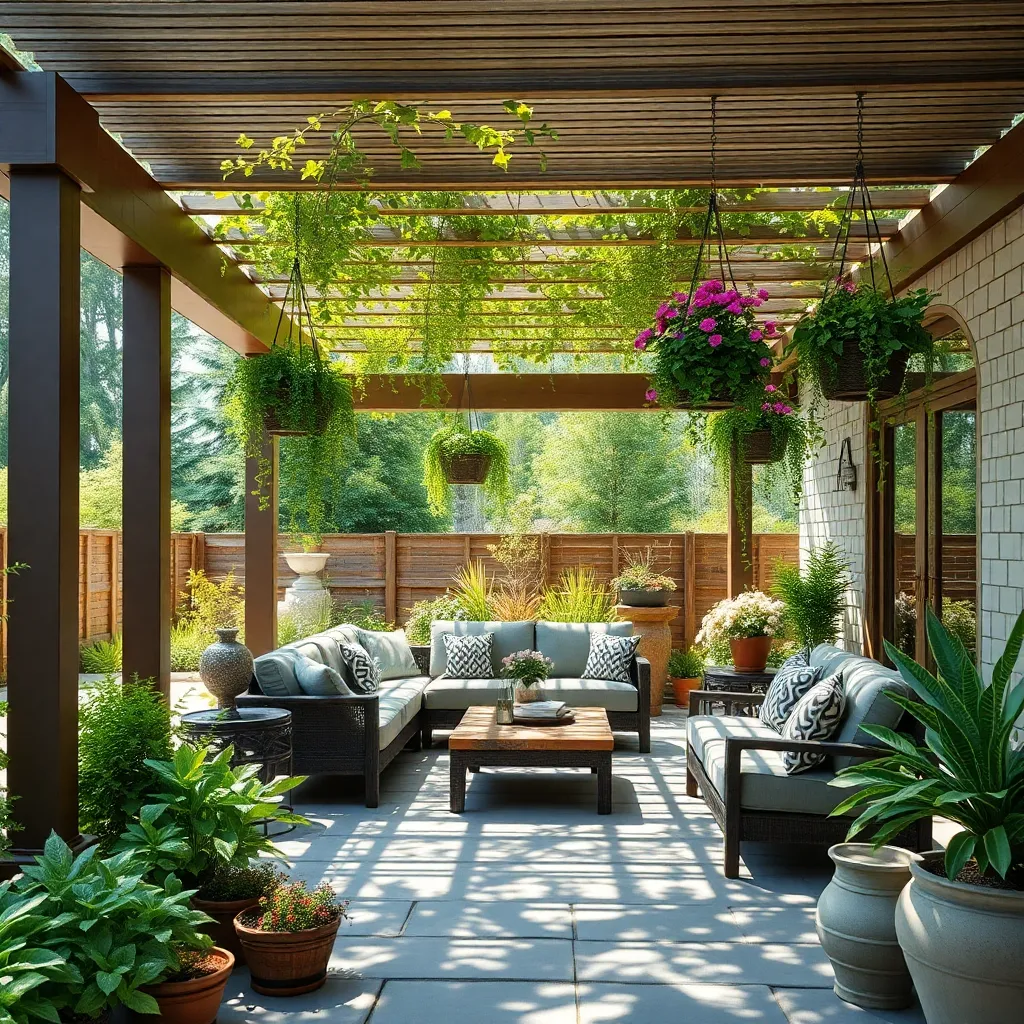
Integrating seasonal plants into your outdoor shelter can create a dynamic and vibrant space that evolves throughout the year. Start by choosing a mix of perennial and annual plants to ensure year-round interest. Consider using raised beds or planters made from weather-resistant materials like cedar or composite wood, which offer flexibility and can be easily rearranged as needed. For beginners, select easy-to-grow options such as marigolds or lavender. More experienced gardeners might plant bulbs like tulips or alliums for a dramatic spring display.
To maximize the visual impact, plan your plant arrangements carefully, considering factors like color, height, and bloom time. Group plants with similar water and light requirements to simplify maintenance and ensure healthy growth. Advanced gardeners can experiment with vertical gardening techniques, using trellises or wall-mounted planters to make the most of limited space. Incorporate mulch to retain moisture and suppress weeds, and use drip irrigation systems for efficient watering. These design choices will not only enhance your outdoor shelter but also provide a lush, inviting environment for relaxation and enjoyment.
Utilize Space-Saving Vertical Gardens
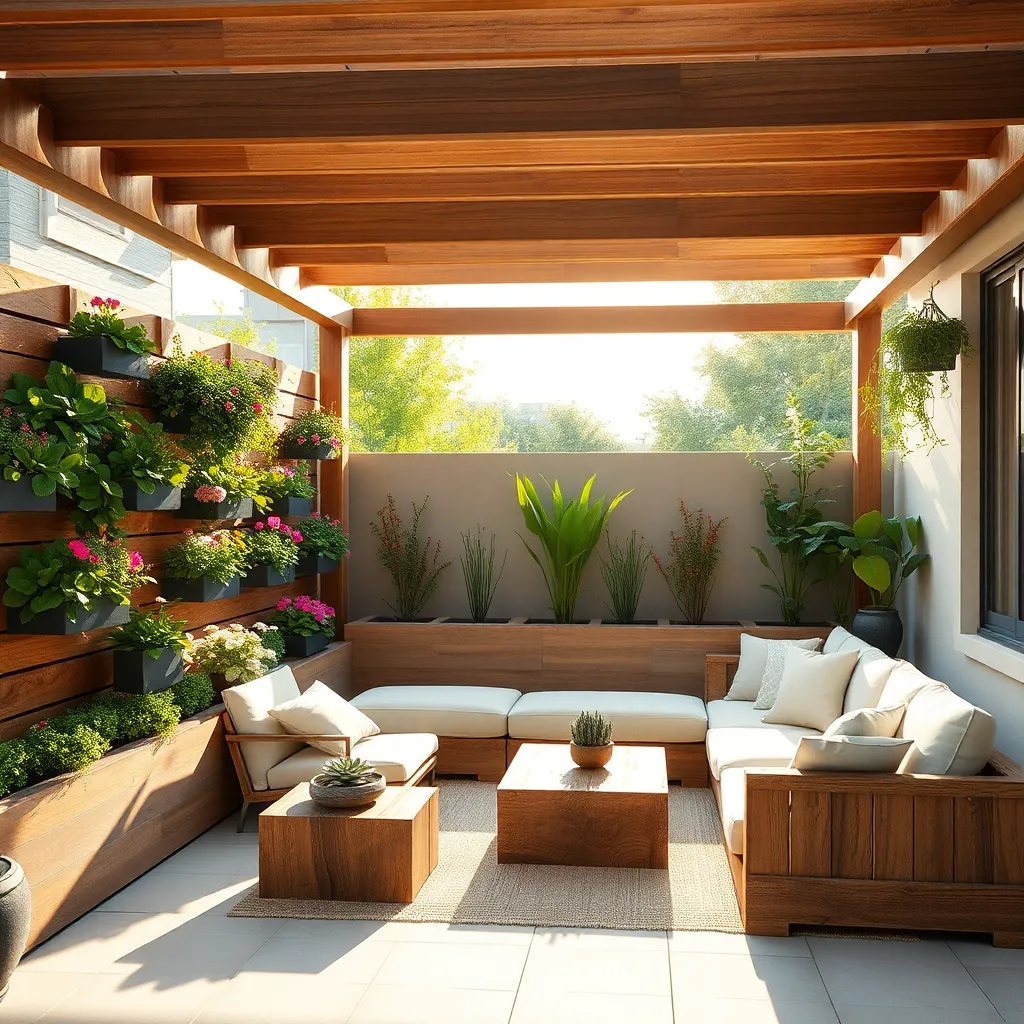
Vertical gardens are an excellent way to maximize limited outdoor space while adding greenery and beauty to your area. Start with a simple trellis or a vertical planter wall, using materials like cedar wood or metal mesh, which are both durable and weather-resistant. Position your vertical garden against a wall or fence, ensuring it gets adequate sunlight—most plants require at least 6 to 8 hours of sunlight per day. For beginners, consider planting herbs like basil and mint, which are easy to maintain and perfect for culinary use.
To elevate your vertical garden design, integrate a drip irrigation system to ensure consistent watering, especially during the hot months. For a more advanced touch, incorporate a mix of flowering plants and trailing vines, such as jasmine or morning glory, to create a lush, layered look. Use planters with built-in reservoirs to reduce water usage and maintenance. By experimenting with different plant textures and colors, you can customize the vertical garden to reflect your personal style, making your outdoor area both functional and aesthetically pleasing.
Incorporate Durable All-Weather Fabrics
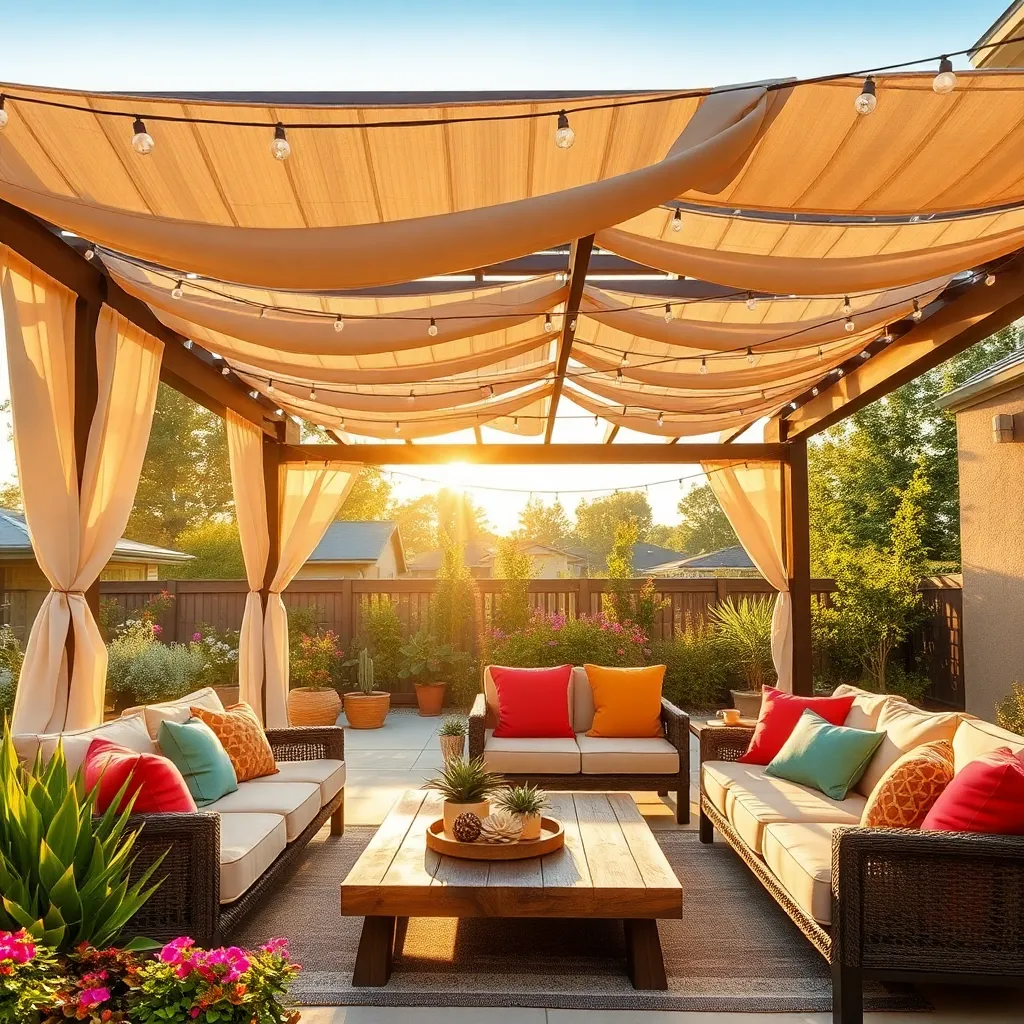
When designing an outdoor shelter that can withstand various weather conditions, incorporating durable all-weather fabrics is crucial. Look for materials like solution-dyed acrylic or polyester, which are known for their resistance to fading, water, and UV rays. These fabrics not only endure the elements but also add a touch of style and color to your outdoor space. For beginners, starting with a simple awning or canopy covered in these materials can provide an effective shield against sun and rain, while more advanced gardeners might explore creating customized outdoor curtains or shades for specific areas.
For those seeking to enhance both function and aesthetics, consider integrating fabrics with high-performance features such as mildew resistance and breathability. When constructing your shelter, ensure your fabric choices are supported by sturdy frames made from weather-resistant materials like treated wood, aluminum, or steel. To maximize longevity, secure fabrics with rust-proof hardware and regularly clean them according to manufacturer instructions. With these thoughtful selections and maintenance practices, your outdoor area can remain inviting and comfortable throughout the seasons, encouraging more time spent enjoying your garden oasis.
Conclusion: Creating Beautiful Outdoor Spaces
In exploring the multifaceted dynamics of outdoor spaces, we’ve uncovered 11 key concepts to enhance your relationship with nature and each other. From creating intimate nooks for meaningful conversations to establishing activity zones that foster teamwork and fun, these ideas weave together the threads of connection, relaxation, and shared joy. Whether it’s a cozy fire pit or a versatile garden lounge, each suggestion offers unique opportunities to strengthen bonds and create lasting memories.
As you embark on your next outdoor project, start with a simple yet impactful step: choose one idea that resonates with your current relationship goals and begin planning. This intentional action sets the stage for deeper connections and nurturing experiences.
Remember, these ideas are not just for now but for the growth of your relationships over time. Bookmark this article as your go-to resource, ensuring you have these valuable insights at your fingertips whenever you need inspiration.
Looking ahead, envision a future where your outdoor spaces become sanctuaries of love and collaboration. With dedication and creativity, your relationships will flourish, blossoming into their fullest potential. Embrace this journey and watch your connections thrive.
